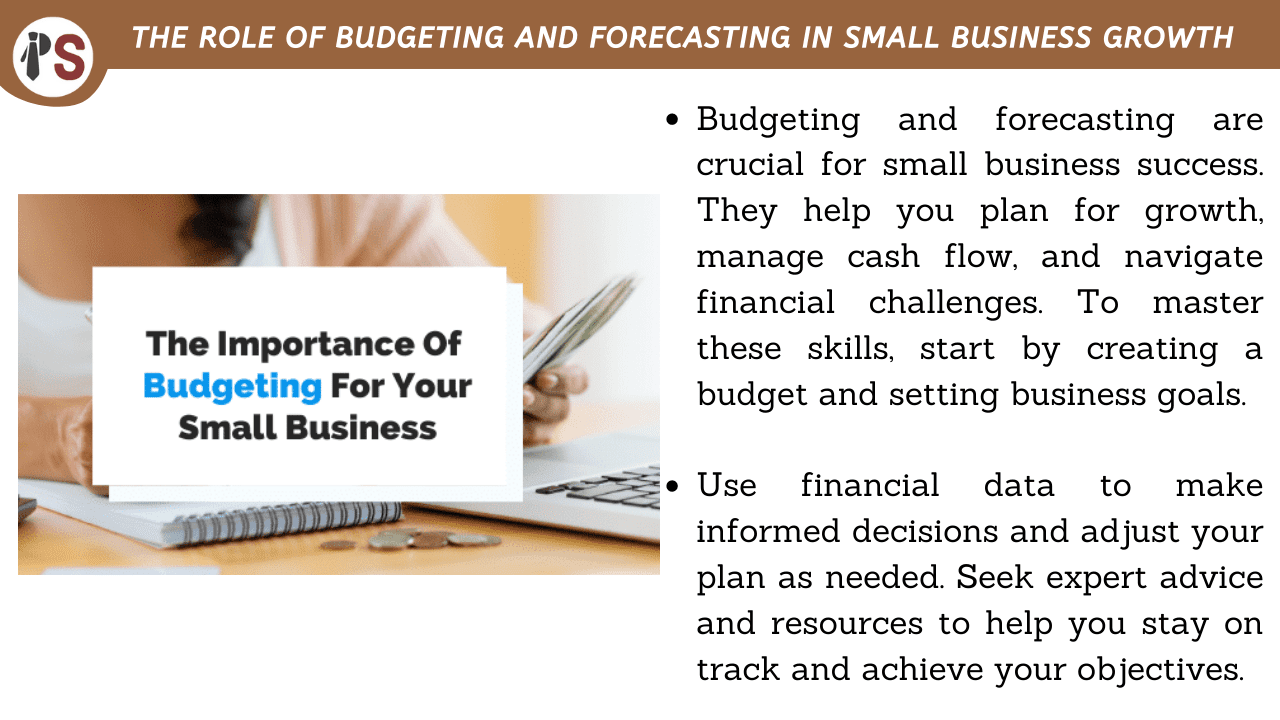
Budgeting and forecasting are two essential tools that businesses, regardless of their size, should use to achieve financial success. In this blog post, we will explore the importance of budgeting and forecasting for small businesses, and how they can use these tools to make better financial decisions.
Budgeting is the process of creating a plan for the use of financial resources. It involves estimating future revenue and expenses, and allocating resources accordingly. A budget is an essential tool for small businesses as it helps them:
Plan for the future: A budget allows small businesses to plan for the future by identifying potential risks and opportunities. It enables businesses to set realistic financial goals and objectives.
Track performance: A budget helps small businesses to monitor and track their financial performance. By comparing actual results to the budgeted amounts, businesses can identify areas where they need to make adjustments.
Control spending: A budget helps small businesses to control spending by setting spending limits and ensuring that expenses are in line with revenue.
Forecasting, on the other hand, is the process of predicting future financial outcomes based on historical data and current trends. Forecasting allows small businesses to:
Plan for growth: By forecasting future revenue and expenses, small businesses can plan for growth and expansion.
Make informed decisions: Forecasting helps small businesses to make informed decisions about resource allocation and investment opportunities.
Identify potential problems: By forecasting future financial outcomes, small businesses can identify potential problems and take corrective action before they become major issues.
Creating a budget and forecast for a small business can be a daunting task, but it is essential for financial success. Here are the steps to create a budget and forecast:
Review historical financial data: Start by reviewing your business's historical financial data, including revenue, expenses, and cash flow. This will help you identify trends and patterns that can inform your budget and forecast.
Identify revenue sources: Identify all potential revenue sources, including sales, investments, and financing.
Estimate expenses: Estimate all of your business's expenses, including fixed costs like rent and salaries, and variable costs like inventory and advertising.
Allocate resources: Allocate resources to revenue-generating activities and prioritize expenses.
Review and adjust: Review your budget and forecast regularly and adjust as needed based on actual results and changing market conditions.
Budgeting and forecasting are critical tools for small business success. They allow businesses to plan for the future, track performance, and make informed decisions. By creating a budget and forecast, small businesses can ensure that they are using their financial resources effectively and efficiently.
At Professional Saathi, we offer a range of business consultancy services that help businesses improve their performance, achieve growth, and overcome challenges.
Copyright 2026 © Created By KTPG PROFESSIONAL SAATHI CORPORATE CONSULTANT PRIVATE LIMITED, All Rights Reserved.
Leave Your Comment